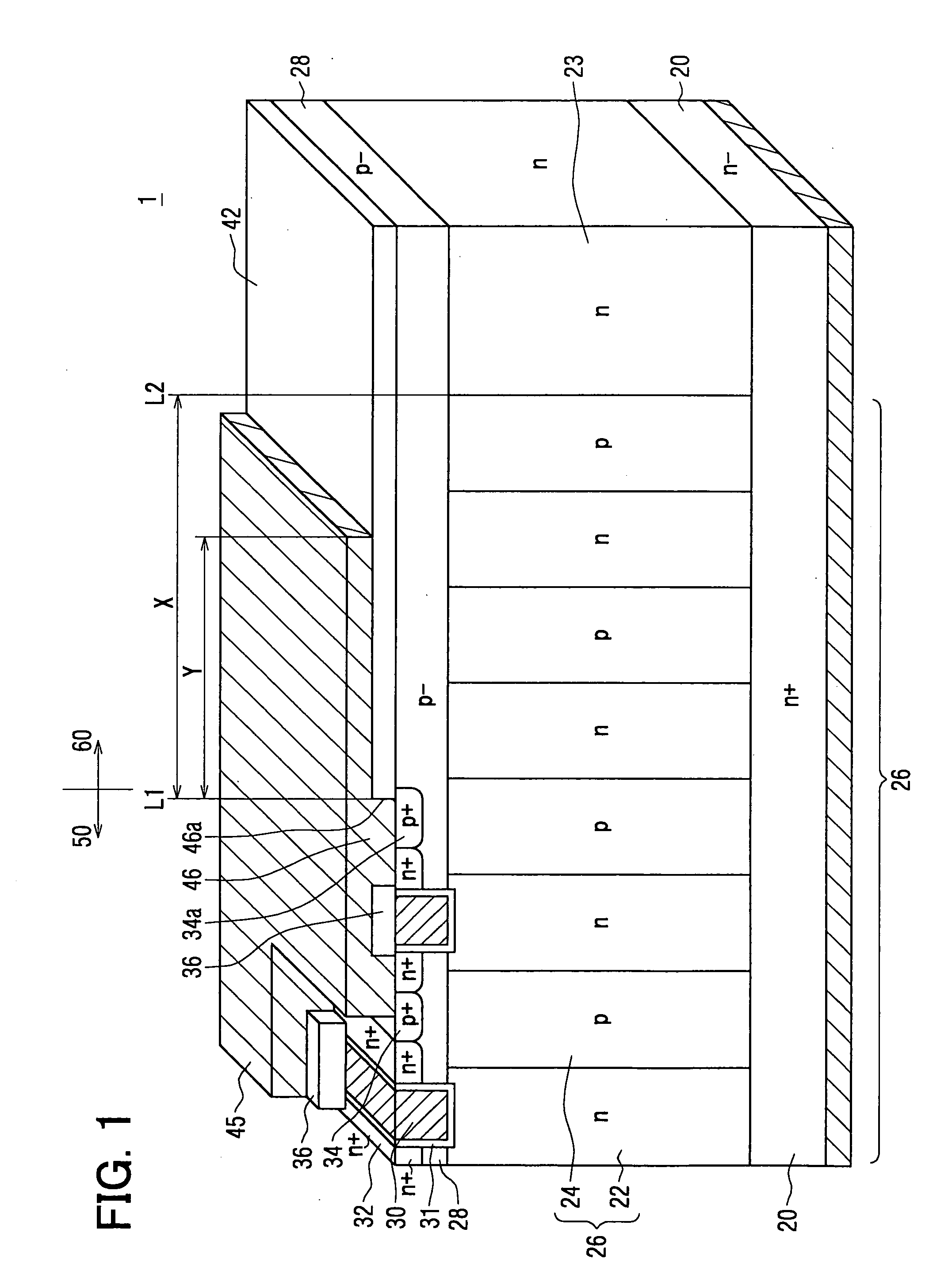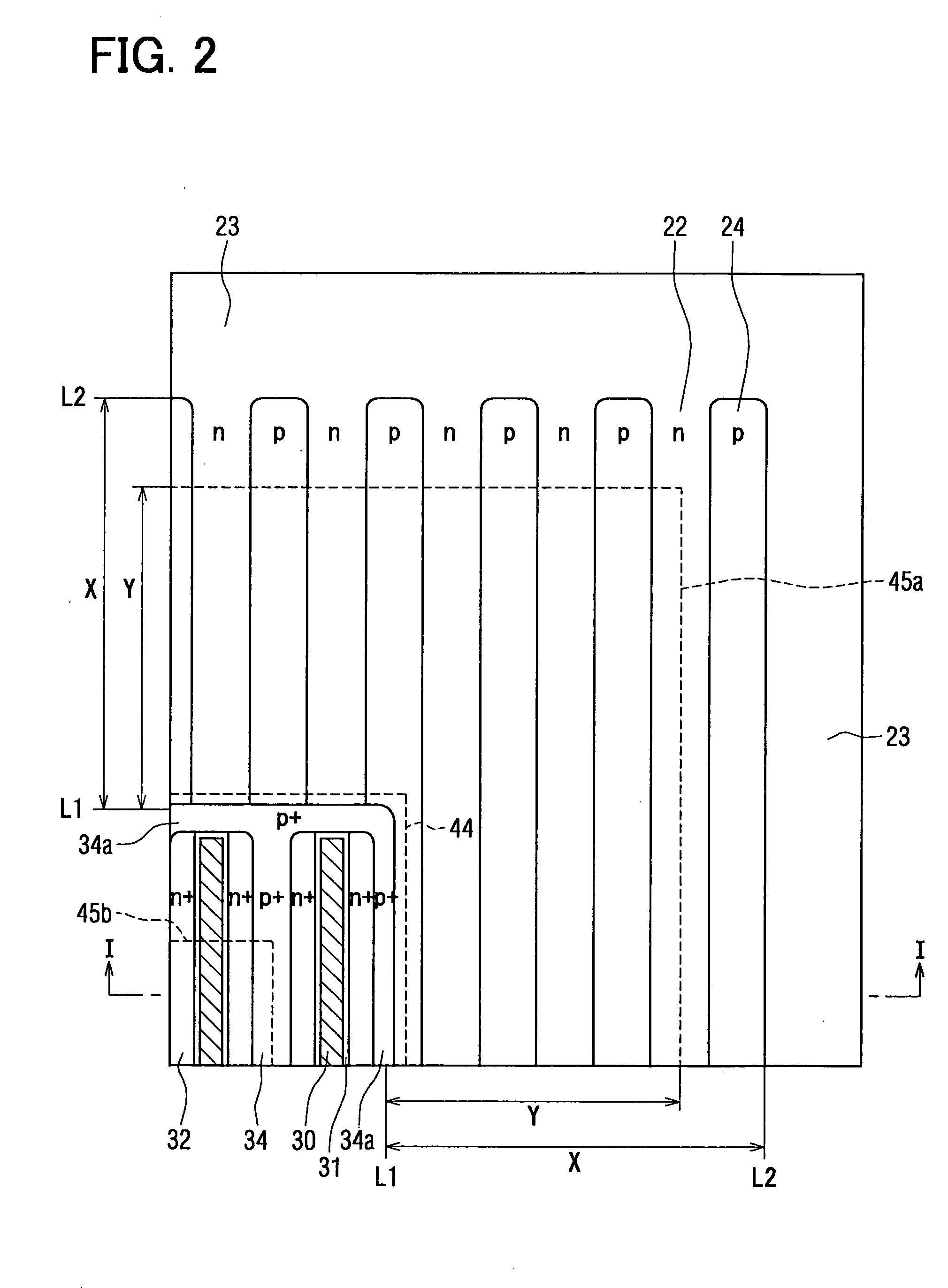Semiconductor device having periodic construction
- Summary
- Abstract
- Description
- Claims
- Application Information
AI Technical Summary
Benefits of technology
Problems solved by technology
Method used
Image
Examples
first embodiment
[0026] The inventors have preliminarily studied about a semiconductor device having a super junction construction. Specifically, the device includes a periphery portion and a center portion. Both of the center portion and the periphery portion have the super junction construction. The super junction construction includes a P type column and an N type column, which provide a periodic construction and are alternately disposed and repeated in a repeating direction. By using a P type contact region disposed in the center portion, the P type column disposed in the periphery portion is connected to a source electrode. A brake down phenomenon occurred in the periphery portion is studied by the inventors. As a result, electric field is concentrated at around an interface between a contact region disposed on utmost outer periphery of the center portion and a part of the periphery portion, which has the same conductive type as the contact region. Thus, the brake down phenomenon is occurred ar...
second embodiment
[0053] A semiconductor device 2 according to a second embodiment of the present invention is shown in FIG. 3. FIG. 3 is a partial cross sectional view showing the device 1 in FIG. 1. FIG. 3 shows an equipotential line distribution of a brake down voltage. Each broken line shows an equipotential line so that the brake down voltage on the same broken line is constant. The brake down voltage is determined in a case where a positive voltage is applied to the first semiconductor layer 20 and the potential of the source electrode 45 is set to be zero. In the device 2, a charge valance between the N type column 22 as the first region and the P type column 24 as the second region is held appropriately. The extension length Y of the source electrode 45 is three-fourths of the distance X between the line L1 and the end line L2. Five units composed of the N type column 22 and the P type column 24 are disposed between the line L1 and the end line L2.
[0054] Another semiconductor device 3 as a c...
third embodiment
[0061] A semiconductor devices 7, 10 according to a third embodiment of the present invention have different numbers of the units composed of the N type column 22 and the P type column 24. Specifically, the device 7 has seven units, and the device 10 has ten units, although the device 2 has five units. FIG. 9 shows a relationship between the withstand voltage and the ratio of the extension length Y and the distance X. Curve 7 represents the device 7, and curve 10 represents the device 10.
[0062] As shown in FIGS. 8 and 10, the withstand voltage of each device 2, 7, 10 is increased without depending on the number of the units of the periodic construction 26 substantially. Therefore, the ratio of the extension length Y and the distance X mainly affects the increase of the withstand voltage of the device 2, 7, 10. Further, when the electrode 45 extends to the interface between the periodic construction 26 and the end region 23, i.e., when the ratio of the extension length Y is one, the...
PUM
 Login to View More
Login to View More Abstract
Description
Claims
Application Information
 Login to View More
Login to View More - R&D
- Intellectual Property
- Life Sciences
- Materials
- Tech Scout
- Unparalleled Data Quality
- Higher Quality Content
- 60% Fewer Hallucinations
Browse by: Latest US Patents, China's latest patents, Technical Efficacy Thesaurus, Application Domain, Technology Topic, Popular Technical Reports.
© 2025 PatSnap. All rights reserved.Legal|Privacy policy|Modern Slavery Act Transparency Statement|Sitemap|About US| Contact US: help@patsnap.com



